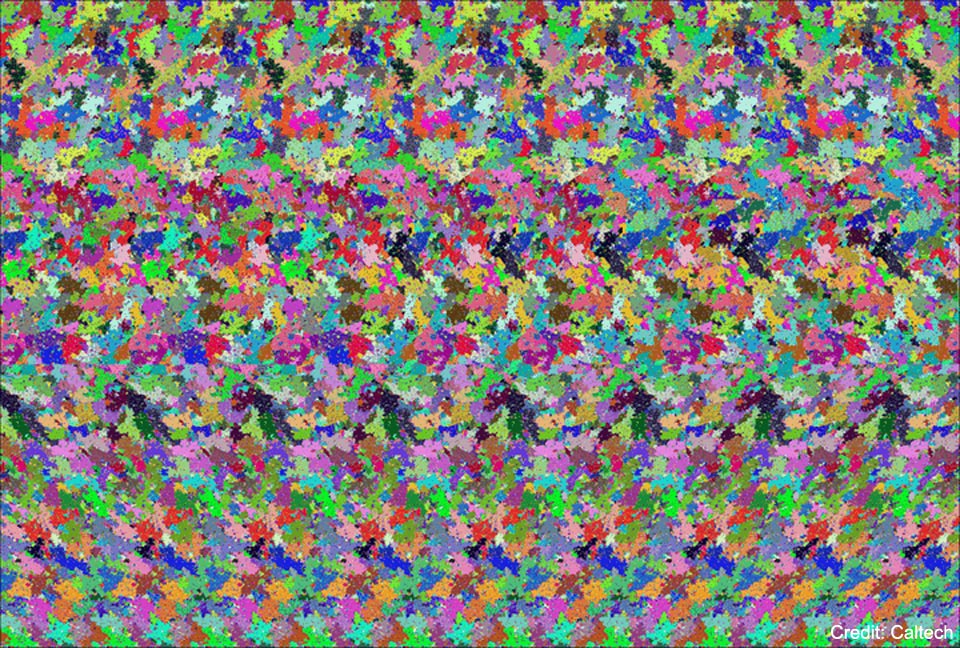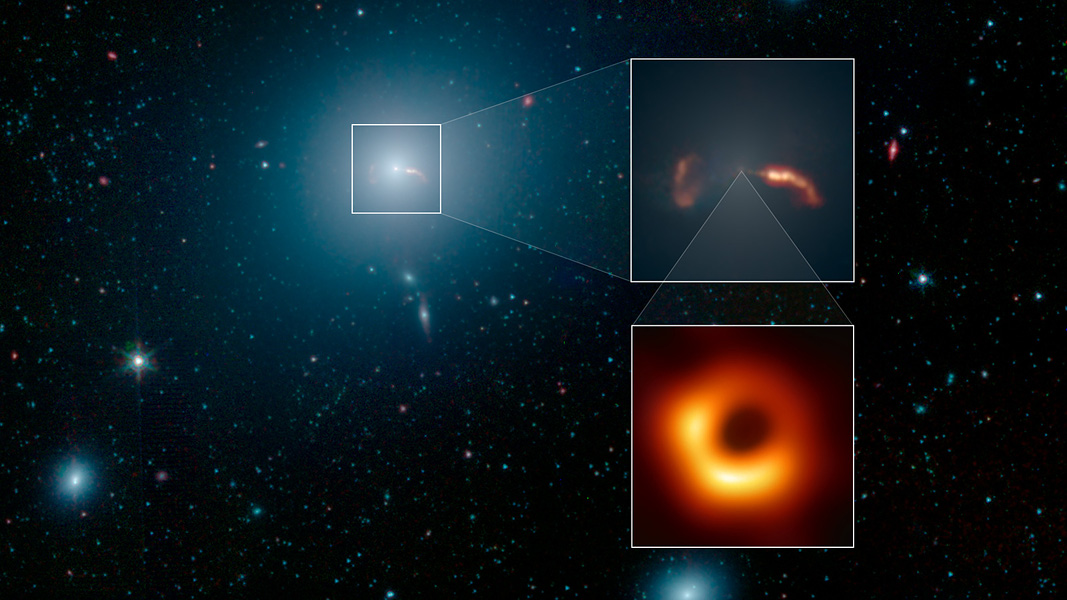2021年10月3日
The Holographic Principle and a Teapot
Image Credit: Caltech
Explanation: Sure, you can see the 2D rectangle of colors, but can you see deeper? Counting color patches in the featured image, you might estimate that the most information that this 2D digital image can hold is about 60 (horizontal) x 50(vertical) x 256 (possible colors) = 768,000 bits. However, the yet-unproven Holographic Principle states that, counter-intuitively, the information in a 2D panel can include all of the information in a 3D room that can be enclosed by the panel. The principle derives from the idea that the Planck length, the length scale where quantum mechanics begins to dominate classical gravity, is one side of an area that can hold only about one bit of information. The limit was first postulated by physicist Gerard ‘t Hooft in 1993. It can arise from generalizations from seemingly distant speculation that the information held by a black hole is determined not by its enclosed volume but by the surface area of its event horizon. The term “holographic” arises from a hologram analogy where three-dimension images are created by projecting light through a flat screen. Beware, some people staring at the featured image may not think it encodes just 768,000 bits — nor even 2563,000 bit permutations — rather they might claim it encodes a three-dimensional teapot.
Tomorrow’s picture: galaxy tails
全息原理和茶壶
影像提供与版权: Caltech
说明: 你当然能看见这个2维长方形里的诸多色彩,不过,你能看更深吗?计算这幅主题影像里的色块,你或许会说这张2维数字图像,能容纳的的最大讯息量约莫是60 (水平) x 50(垂直) x 256 (可能的颜色) = 768,000位元。然而,至今尚未获得证实的全息原理称与直觉相违的,2维面板所能容纳的资讯量,是2维板面所能包住的最大3维空间之所有资讯量。全息原理说:以普朗克长度为边的面积,只能存放大约1位元的资讯,而普朗克尺度,则是指量子力学效应开始主宰古典重力的长度尺度。这个极限是由荷兰物理学家特夫特,在1993年首先提出的。然而,这样的想法却起源自一个看似风马牛不相及的猜测:黑洞所拥有的资讯量,是由事件视界的表面积所决定的,而不是它的体积。 “全息”这个名词则引借自全息摄影,因为在全息摄影术里,把光投射在平板状的全像底片上,可以投射出3维的影像。请注意!当看见上面这张图时,或许有人不同意此图容纳了768,000位元的资讯,或是此图有2563,000位元的排列方式,而是宣称此图为一个3维茶壶的编译。
明日的图片: galaxy tails



